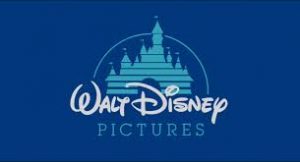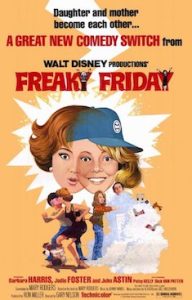
Disney Movie Eras: Live Action Films Thru 1979
This month continues a new series of blogs for fans of popular culture. Whereas in the past explorations of Walt Disney films we highlighted individual works, we will now be talking about the larger groupings of movies, and the various artistic and commercial visions sought for and achieved from said movies.
A quick run though of the eras:
The Golden Age: 1937-1941
Wartime: 1942-1949
The Silver Age: 1950-1967
The Bronze Age: 1968-1988
The Renaissance: 1989-1999
Post-Renaissance: 2000-2009
Revival: 2010-Present
As you can see, the various eras are inspired by historical art movements over the year, as well as comic books. You can draw the parallel, for instance, between the Italian Renaissance, or between the iterated variations of popular superheroes like Batman and Superman.
We will also be covering Disney live action films. The list of films owned by the Walt Disney Corporation is quite expansive because it includes multiple studios and production companies, such as Touchstone Pictures, Pixar, and more. And for good measure, we will also cover animated films that released without the official Walt Disney Pictures branding, as well as films that only released via television or Disney +.
So buckle up everyone as we retread the Disney films of years passed:
In the 1970s, the Walt Disney Corporation prepared to enter a troubled time-period. Founder and visionary Walt Disney passed during production of The Jungle Book and The Aristocats, the last films he had any input on. Walt would not long be survived by his brother, Roy Disney. Roy worked extra hard to keep everything running smoothly, as well as overseeing Walt's dream project of opening Walt Disney World. Direction of the company would pass through a few hands over the next twenty years, but in the meantime, production continued on numerous projects.
The company released 39 live-action films over the decade. We will discuss the five most prominent ones.

Based on a pair of books by Mary Norton, the film rights to Miss Norton's works were picked up by Disney in the early 1960s. While the company struggled to produce Mary Poppins, they would go back and forth with production of Bedknobs and Broomsticks. In many ways, the two films shared numerous film elements and design. At one point, they almost shared a cast too; both Julie Andrews and Dick Van Dyke were in talks to star in the film, before the casting of Angela Lansbury and David Tomlinson. Disney shelved production again to focus on getting Mary Poppins out the door, so Bedknobs did not get revisited until 1969, after Walt's death. The film eventually released in 1971 to slightly positive approval, but most reviewers disliked the similarities to the earlier film, as well as the exceedingly long length. The final film was over 2 hours long, and twenty minutes were cut from the film initially, and again for a 1979 re-release. The initial, full length film did not get a release until 1996.

As the 70s wore on, Disney made renewed attempts to reach out to contemporary audiences. Based on a novel released in 1968, Escape to Witch Mountain tried really hard to resonate with children and teens of the day. Released in 1975, the film follows a trio of orphan siblings with supernatural powers. They find themselves on the run from a greedy millionaire, bound to reconnect with their family waiting for them at Witch Mountain. The film grossed $20 million.

Another film based on another book. The latter came out in 1971, but this film adaptation with Don Knotts hit theaters in 1975. A tricky card player inadvertently inherits guardianship of a trio of rascally orphans. The three urchins stumble across a gold nugget that becomes the talk of the small town and must work together to foil robbery by a gang of outlaws. The film performed reasonably well in theaters and earned a sequel with Knotts returning.

This blurb is purposely being written on a Friday! Not Friday the 13th, which is later this month... or last week, based on when this blog is published. Anyway! Disney struck gold when a frantic film about a mother and daughter, frustrated with their relationship, wish to trade places for a day. Lo and behold, the magic of Friday the 13th has the two switch places, and then proceed to experience life in one another's shoes, before finding new appreciation for each other's hardships. The film was not particularly well received back in 1976, however it did help accelerate of a young Jodi Foster. Though not her first film, the young actress would go on to become a Hollywood darling over the next 15 years. In 2003, the film got a reboot with Jamie Lee Curtis and Lindsey Lohan, but we'll talk more about that later.

When considering how to organize the huge collection of Disney films, one of the categories I considered were Hybrid films, using a mix of live action and animated footage. Disney was hugely instrumental in not only animated films, but also the techniques of combining live action and animation together, dating back to the 1940s (and even further, if you consider the Alice Shorts). By 1977, this was 'old hat' for Disney, and they conceived their most ambitious adventure to date. Based on an unreleased cartoon segment from the 1950s, Pete's Dragon released as a somewhat long musical adventure set in early 20th century Maine. The most prominent part of the film is of course the title character, Elliot, a magical dragon who protects Pete, an orphan boy. The animation for Elliot was rather impressive and memorable, and unlike most films, Elliot's presence is felt throughout the entire screenplay, rather than a single segment or two, as in Mary Poppins and Bedknobs and Broomsticks. It even became one of the many films to earn a live-action reboot, but we'll talk about that later.
That wraps up our discussion of the 1970's life-action films. Stay tuned as we venture into the 1980's!


Add a comment to: Disney Movie Eras: Live-Action Films Through 1979